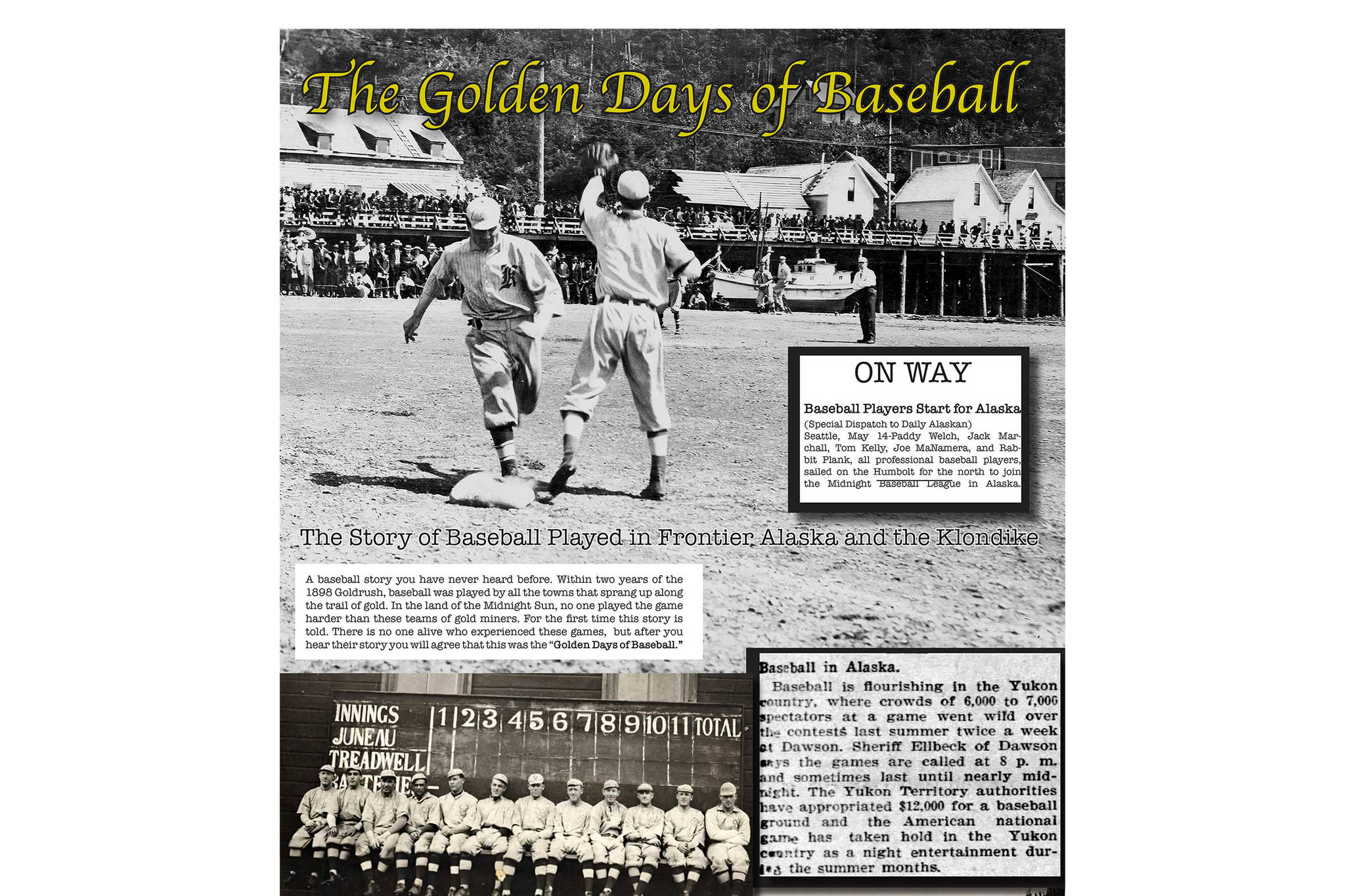Of all the wonders people associate with Alaska, baseball isn’t often one of them. However, a new book by local author Larry Johansen seeks to change that.
Johansen, a lifelong resident of Southeast Alaska, said that last year he was looking at Alaska newspapers from 1867 to 1917 and kept coming across baseball stories.
“I realized there’s a book here,” he said in a phone interview earlier this week.
A check-in with the National Baseball Hall of Fame and Museum in Cooperstown, New York, revealed that the history of Alaskan baseball was utterly untold. So, he set out to plumb the depths of the topic while locked inside during the first COVID-19 surge.
The result is his new book, “The Golden Days of Baseball, The Story of Baseball Played in Frontier Alaska and the Klondike.” He’s also written two other books about life in Southeast Alaska.
“I think people will be surprised by the propensity to play. The miners took the opportunity to play as hard as they worked. Energy and passion drew people together to play baseball,” he said.
Juneau Voices Audio Walk debuts downtown
He said that each local gold mine had a team during the gold rush years, and they played for the championship each summer. Traditions took hold, including a game to cap festivities on July 4.
“Optimal conditions created interest,” Johansen told the Empire in an email last week. “At 11 p.m., the sun was still shining brightly whereas, in the Lower 48, the first ‘night’ game wasn’t played until 1972. There was no TV, no radio, no cars. There wasn’t a lot to do in the evening, so baseball took root.”
Interest in the games drove a competitive spirit.
“Some of the teams would go out and find pros to bring up to play,” he said, noting that local bosses who wanted to win in the evening would give top players desk jobs to keep them fresh for competition.
Johansen attributes the game’s popularity in the region to various factors, including a rapidly increasing population, ships full of crew members who were eager to play local teams, the long evenings full of sunlight, and a downtown diamond that drew crowds.
Lively media coverage of the games didn’t hurt either.
“The articles are written with so much passion. They are very clever and really hilarious. One reporter made comments that the Juneau team should be issued traps so they could catch things,” he said. “Through the articles, you get a sense of how people loved the baseball games.”
First-ever Tlingit opera will premiere locally
According to Johansen, a confluence of factors, including wars, mine closures and population changes, ended baseball’s role as a prime entertainment source.
But, he says the book is an excellent source of entertainment for history buffs, baseball fans and people interested in Alaska.
“I hope people enjoy it,” he said.
The book will be available May 5 at local bookstores, including Rainy Retreat Books and Hearthside Books. It will also be available online at LarryJohansen@RowdyDogImages.com.
• Contact reporter Dana Zigmund at dana.zigmund@juneauempire.com or 907-308-4891.

